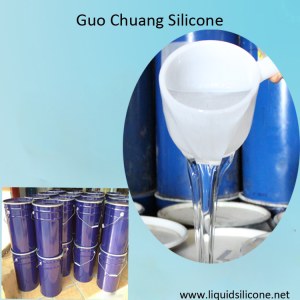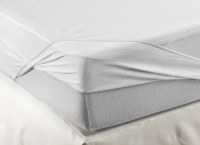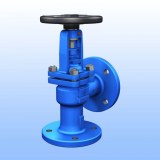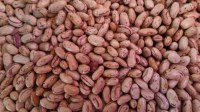 |
|||||||||||||||||||||||
|
Materias primeras
Addition cure liquid silicone rubber raw material for mold making |
|
Item No. |
Appearance |
Hardness (shore A°) |
Viscosity (CPS) |
Tensile-strength ( kgf /cm2 ) |
Tear-strength (kgf /cm2 ) |
Elongation-break (%) |
Mixing ratio |
operation time (25℃ ) |
Curing time( 25 ℃) |
Shrinkage |
|
G-830 |
translucent |
30±2 |
7000±1000 |
≥55 |
≥24 |
≥450 |
1: 1 |
20-30 mins |
2~3 h |
≤0.1% |
Using instruction
1. Place a plastic container on a small scale, making sure to zero out the weight on the scale. Note: use a container that, during rise under vacuum in Step 5, will allow for material to expand to 4-5 times its resting volume.
2. Pour catalyst into the plastic container, noting weight of material poured.
3. In the same container, pour an equal weight of base on top of the catalyst (e.g., 100 grams of catalyst and 100 grams base). Note: within a 5% weight variance, the end result is not altered.
4. With a clean, dry mixing spatula, mix energetically until the color of the product is homogeneous. Note: working time begins at this step. Mixing should take no longer than 1-2 minutes.
5. Place container under vacuum and vacuum until material bubbles and rises. Release vacuum and repeat until bubbles are removed. Vacuuming should take no longer than 3-4 minutes.
6. From a height of approximately 30 cm, pour the mixed silicone into the mold frame. Maintain the pouring stream in the same spot so as to minimize introduction of air bubbles into the mold.
7. Allow the mold to sit, undisturbed, for at least 4 hours to ensure the silicone is fully cured.
8. Remove the mold from the frame.
9. Cut around the pattern carefully to release it from the silicone rubber mold.

Notice
The surfaces with which the material comes in contact must be perfectly clean, free of grease and dry.
Close the bottles after use so as not to confuse the cap of the catalyst with that of the base when re-sealing.
Be aware of possible cross-contamination; it's highly recommended to use only dedicated gear when processing poly-addition RTV2 silicone rubber (including degassing devices).
Be aware that contact with certain material can inhibit the curing of the RTV2 poly-addition silicone rubber. Common contaminants to be avoided include:
-Natural or synthetic rubber, vulcanized with sulphur derivatives.
-Poly-condensation RTV catalyzed with metallic salts.
-PVC stabilizing agents.
-Amine cured epoxies.
-Sulphur, tin and amines derivatives.
-In case of doubt, carry out a small test by pouring the mixture onto a small area of the object.
Packaging & Shipping
Packing:
20KG/drum vacuum packing for part A + 20KG/drum vacuum packing for part B
25KG/drum vacuum packing for part A + 25KG/drum vacuum packing for part B
200KG/drum packing for part A +200KG/drum packing for part B
Why Choose Us?
1.Free Sample
2.Sample Test
3.Technical Support
4.Engineers Site Instruction
5.New products developing
6.New Market developing
7.Factory Visiting Reception
8.China visiting reception
9.China Latest silicone news
10.Related Products Purchasing Assistance
11.More than 8 years experience in producing liquid silicone rubber
Persona a contactar : Sybil Gan, 86 0769 85303932
Buen trato: comprar del vendedor
Por favor, lea nuestras condiciones de uso. También puede visitar nuestras preguntas frecuentes y ver nuestra información sobre los riesgos relacionados con la falsificación.
|
Esta página es acerca de los importadores y exportadores de Addition cure liquid silicone rubber raw material for mold making Buscar en la categoria : Materias primeras Buscar en la categoria : silicone, liquid, mold, rubber, material, addition, cure |
Tuesday 06 January 2026
Impermeable Equipada colchón protectores con el respaldo de TPU (Hijuelas / Bed Covers) Impermeable y transpirable Terry tela con membrana de PU 100% algodón / 80% algodón + 20% poliéster 160-180 gsm (se puede organizar respecto a las necesidades del cliente) Protege el colchón...
Anatolia Textile LTD
- yusufboun
- 34160 - Istanbul
- 00905358815802
Wednesday 14 September 2016
Cantidad : 5000 - Precio : 100,00 €
Bellows Seal Stop Valves (Angle Type) DIN Angle Type Bellows Sealed Stop Valve DIN Bellows Seal Globe Valve DIN Faltenbalgventil Eckform DIN Válvulas de fuelle(Paso angular.) DIN ventil uzavírací s vlnovcem rohový DIN Standard seteventil med belg (Vinkel modell) DIN Standardında...
ETM Armaturen
- 59590 - Henri Durre
- 86 577 67953935
Saturday 20 February 2016
Cantidad : 1000 MT PE - Precio : 300/mt CIF
Product Description Dried Kidney Beans 2014,Sugar Beans Specifications 1. Origin: Thailand 2. Crop: 2014 3. Quality: Grade One 4. Specifications: Size 220-240pcs/100g Moisture 16% max; Admixture 0.2% max; Imperfect: 2% max; Cooking time: less than 60min with hot water 5...
Khun Jack Partnership Ltd
- 5000 - Chaing Mai
- +66 9 68 75 20 43







